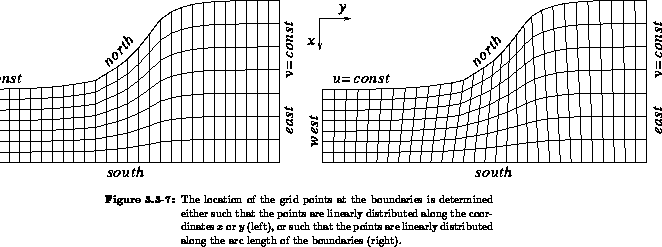 -coordinate varies less than the
value of the
-coordinate varies less than the
value of the  -coordinate at the north (N) and south (S) boundary, and
-coordinate at the north (N) and south (S) boundary, and  varies less than
varies less than  at the east (E) and west (W) boundary. Motivated by
this fact the points are distributed at the boundaries, such that
at the east (E) and west (W) boundary. Motivated by
this fact the points are distributed at the boundaries, such that  varies
linearly along the
varies
linearly along the  -axis for the N/S boundary (where
-axis for the N/S boundary (where  is constant),
and
is constant),
and  varies linearly along the
varies linearly along the  -axis for the E/W boundary (where
-axis for the E/W boundary (where  is constant) (see Figure 3.3-7, left).
is constant) (see Figure 3.3-7, left).




